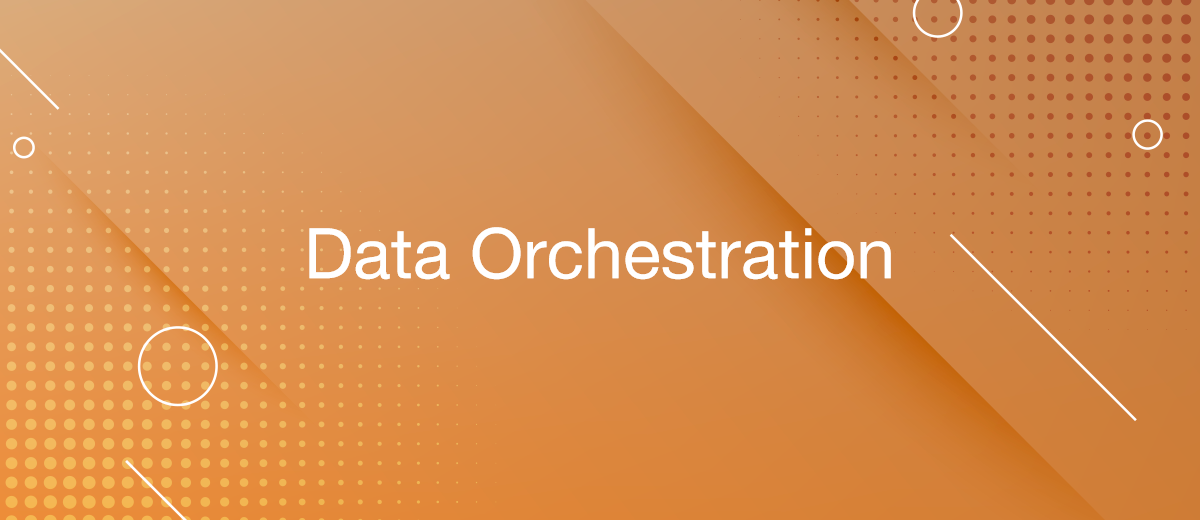Data Orchestration: Concept, Tools and Trends
In the era of digitalization and exponential growth in data volumes, data orchestration is becoming an integral part of the information management strategy in organizations. It allows companies not only to optimize their work processes but also to extract valuable insights from the information. This contributes to more informed decision-making and increased competitiveness in the market. In this article, we'll look at the basics of data orchestration, its key components, benefits, and challenges, and the latest trends in the field.
What is Data Orchestration
Let's start with the data orchestration definition. It is the process of managing, coordinating, and automating the flow of data between different systems and services within an organization. To better understand what is orchestration of data, imagine a conductor who controls an orchestra. Similarly, data orchestration ensures that all elements of the system “play in unison”, ensuring a smooth and efficient flow of information. In today's world of big data, where organizations need to collect, process, and analyze large amounts of information from various sources, data orchestration is particularly important. It allows you to automate routine tasks of transferring and transforming data, reducing the likelihood of errors and freeing up specialists' time for more important tasks.

This organizational method is used in various fields, from financial services to healthcare. It is necessary when data integration from different systems is required for analytics, reporting, monitoring, and informed decision-making. Its capabilities include not only data movement but also data lifecycle management, security, and compliance.
How Does It Work
Having figured out what does data orchestration mean, you will probably be wondering how exactly this method works. It provides centralized management of data flows, optimizing processes and increasing the efficiency and reliability of data management in the organization. Orchestration begins with defining the sequence of data processing tasks, such as collection, transformation, loading and analysis. These tasks are then automated and coordinated using specialized software. As a result, data moves seamlessly between different systems and processes.
A key feature of orchestration is the ability to manage dependencies between tasks. It allows you to determine exactly in what sequence they should be performed. For example, data must first be extracted from one system before it is transformed and loaded into another. It ensures that these operations are performed in the correct order and at the correct time.
Modern orchestration tools also provide capabilities to monitor and manage task execution. This allows you to quickly respond to errors and changes in data flows. These include problem alerts, automatic re-running of tasks when they fail, and dynamic resource scaling.
Examples of Using
Orchestration data finds application in a wide variety of areas, providing effective data management. Here are some examples of its use:
- Data integration in business intelligence. Companies collect data from multiple sources such as CRM, ERP, and social media to create comprehensive reports and analytics. Orchestration allows you to automate the collection and processing of this data, ensuring that it is timely updated and available for analysis.
- Automation of marketing campaigns. Data orchestration helps marketers automate the processes of audience segmentation, content personalization, and campaign performance measurement. This involves integrating data from various marketing tools and platforms.
- Big data processing and analysis. Orchestration is used in fields that require working with huge volumes of data, such as scientific research or the financial sector. It allows you to automate the processes of data collection, processing, and analysis, simplifying the extraction of valuable information.
- Digital transformation in healthcare. Data orchestration is used to integrate information from various medical systems and devices. This allows you to more effectively manage patient data, improve the quality of medical care and optimize the performance of medical institutions.
- Supply chain management. In logistics and supply chain management, orchestration automates supply tracking, inventory management, and supplier performance analysis. This is achieved by integrating data from several sources to create a unified information system.
- Software development and testing. Data orchestration is used to automate continuous integration and deployment (CI/CD) processes, allowing developers to test and implement software changes faster and more efficiently.
These examples demonstrate how data orchestration can improve efficiency, reduce costs, and speed up decision-making processes across a variety of industries.
Data Orchestration Components

Data orchestration consists of several key components, each of which plays an important role in managing and processing data:
- Collection tools. Used to retrieve data from various sources, including databases, files, APIs, and web services. These tools provide an initial stage of data processing, preparing it for further analysis and use.
- Transformation systems. Responsible for converting collected data into a format suitable for analysis and storage. This may include data cleaning, normalization, enrichment, and aggregation.
- Transmission mechanisms. Allow you to move data between different systems and storages. They provide efficient and secure data transmission, taking into account the requirements for speed and volume of transmitted information.
- Storage. These are systems for storing processed data. They can be implemented in the form of databases, data warehouses, or data lakehouses, depending on the requirements for analysis and data access.
- Analysis tools. Include software for BI (business intelligence), machine learning and artificial intelligence. They allow you to extract valuable information and make informed decisions.
- User interfaces and dashboards. Required for data visualization, monitoring orchestration processes, and task management. Dashboards give users the ability to easily interpret data and evaluate the effectiveness of processes.
Each of these components plays a role in creating an effective data orchestration system. Together, they provide flexibility, scalability, and reliability in data management.
We remind you that with the help of our ApiX-Drive connector, you can set up automated data transfer to work with information from different sources in a single interface. There is also functionality for formatting data, so you will receive information in the form you need.
Market for Data Orchestration Solutions
In 2023–2024, the market for data orchestration solutions will show significant growth, driven by increasing data volumes and the need for effective management. Companies are looking for solutions that will help automate data processing, improve the quality of analytics, and speed up decision making. We have prepared for you a selection of the 10 best and most popular data orchestration tools:
- Apache Airflow (Apache Software Foundation) is an open service designed for programming, scheduling, and monitoring workflows.
- AWS Step Functions (Amazon) is a service that offers workflow management for cloud applications on the Amazon Web Services platform.
- Google Cloud Composer (Google) is a managed orchestration service based on Apache Airflow to automate workflows on Google Cloud.
- Azure Data Factory (Microsoft) is a cloud service for data integration and transformation on the Microsoft Azure platform.
- Prefect (Prefect Technologies) is a modern workflow automation platform with a focus on simplifying the orchestration process.
- Luigi (Spotify) is a tool from Spotify that allows you to organize complex data processing pipelines.
- Dagster (Elementl) is an open-source data orchestration platform offering strong integration with modern development tools.
- Apache NiFi (Apache Software Foundation) is an open-source project for automating the flow of data between systems.
- Talend (Talend) - offers a wide range of tools for data integration, data management, and cloud orchestration.
- Informatica PowerCenter (Informatica) is one of the veterans in the field of data integration, launched in 1993, providing powerful tools for data orchestration and management.
This selection reflects the variety of data orchestration platforms available on the market, from open-source services to cloud and enterprise platforms. Each offers unique capabilities for different conditions and scales.
New Trends
In 2023–2024, data orchestration continues to evolve, adapting to new challenges and opportunities. Among the key trends that have a significant impact on business are the following:
- Integration of artificial intelligence and machine learning. Data orchestration platforms are increasingly using AI and ML to automate complex decisions related to data management, processing, and analysis. This allows you to improve the accuracy of analytics and optimize workflows.
- Simplification of the user interface. To speed up development and simplify the work of data scientists, modern orchestration tools offer more intuitive and user-friendly user interfaces. This makes orchestration accessible to a wide range of users.
- Cloud orchestration. With the increasing popularity of cloud computing, data orchestration is increasingly being done in the cloud. This offers flexibility, scalability, and improved ability to integrate data from various sources.
- Focus on safety and compliance. With increasingly stringent data protection regulations, orchestration platforms are placing an increased emphasis on security and compliance. This is necessary to ensure data protection at every stage of processing.
- Autonomous orchestration. Advances in technology are leading to the emergence of solutions that can independently optimize orchestration processes. They adapt to changes in data and business processes in real-time.
These trends reflect the industry's overall direction towards more efficient, secure, and automated data management. This speeds up decision-making, reduces costs, and increases business competitiveness.
Data Orchestration vs ETL
Data orchestration and ETL (Extract, Transform, Load) are two concepts often used in the context of data processing and management, but they have key differences. ETL focuses on the specific process of extracting data from sources, converting it into the desired format, and loading it into the target system for analysis or storage. This is a technical procedure aimed at preparing data for use.


Data orchestration, on the other hand, is the broader process of managing various data processing tasks, including but not limited to ETL. It covers the coordination and automation of the entire data workflow – from collection and processing to analysis and distribution, ensuring effective interaction between various tasks and systems.
So the main difference is scale. ETL is part of the data orchestration process, which in turn is the comprehensive management of data flows in an organization.
Data Orchestration vs Data Integration
Data orchestration and data integration play important roles in information management, but they have different goals and approaches. Integration focuses on merging data from different sources into a single repository or system to ensure consistent access and analysis. This process involves negotiating formats, removing duplicates, and ensuring data integrity.
On the other hand, orchestration encompasses a broader range of tasks related to data workflow management. It includes scheduling, automating, and coordinating the execution of various tasks such as collecting, transforming, loading, and analyzing data. The main objective of orchestration is to optimize and effectively manage data flows in general, rather than solely merging them.
To summarize, integration primarily focuses on combining and standardizing data, while orchestration manages the entire data processing, including integration, as part of a larger workflow.
Advantages and Disadvantages of the Method
Data orchestration, like any other data management method, has both advantages and disadvantages. We invite you to familiarize yourself with them.
Pros:
- Efficiency and automation. Reduce the time and effort required for routine data operations through process automation.
- Improving data quality. Standardizing data processing helps reduce errors and improve data accuracy.
- Flexibility and scalability. Ability to quickly adapt to changes in business needs and data volumes.
- Improved data management. Centralized data flow management provides better control and visibility of processes.
Cons:
- Difficulty of implementation. Developing and configuring an orchestration system can require a significant amount of time and financial investment.
- Skill requirements. Effective use and management of data orchestration requires highly trained professionals.
- Tool dependence. Selecting and integrating different orchestration tools can create dependencies on specific technologies or vendors.
- Change management. The need to adapt business processes to a new system may cause resistance among employees.
Data orchestration offers significant benefits to organizations looking to optimize data management, but careful planning and management are required to minimize potential drawbacks.
Conclusion
Data orchestration meaning is to effectively manage multiple disparate information flows in organizations. It allows you to automate and coordinate complex data management operations, ensuring their efficiency, reliability, and relevance. The use of this method opens up new opportunities for data analysis, integration, and security, although it requires a careful approach to the choice of tools and implementation strategy. Benefits such as improved data management and improved business process efficiency make it an important development path for companies seeking to innovate and become more competitive.
Apix-Drive is a simple and efficient system connector that will help you automate routine tasks and optimize business processes. You can save time and money, direct these resources to more important purposes. Test ApiX-Drive and make sure that this tool will relieve your employees and after 5 minutes of settings your business will start working faster.

